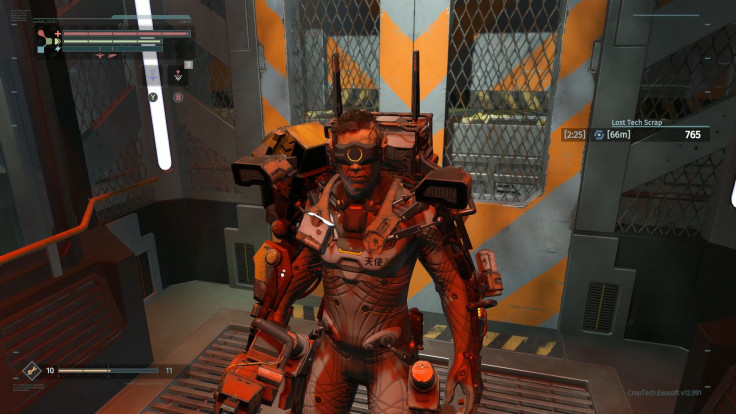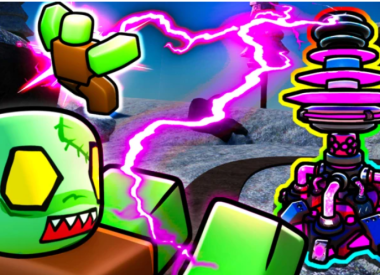With the release of Dark Souls III: The Fire Fades, a complete edition of FromSoftware’s final entry into their critically-acclaimed Souls series back in April 2017, I knew that it was both the end of an era and a beginning of a new one, the latter to be dominated by games which will replicate the Souls formula of challenging gameplay and action-oriented role-playing elements. In fact, earlier that year saw Team Ninja’s Nioh, which was released to critical acclaim and gave some hope for the future of the subgenre.
A month after Dark Souls III: The Fire Fades was the release of Deck13 Interactive’s The Surge, which sought to take on this same subgenre, but with a tweak to the formula in a setting as far away from its inspiration’s medieval one. It’s a concept that intrigued me, and as someone who’s always out for a game ingrained deeply with the Souls style in mind, I set about playing it a few months after its initial release.
The initial experience for The Surge, however, wasn’t exactly good when it first launched two years ago. Often, it was messy, janky and sometimes downright broken, with the hitboxes and tracking for various enemies all over the place. Despite this, and even after playing it again over this past weekend, The Surge still remains to be my favorite Souls-like title out there owing to its presentation and the fact that when it works, it works beautifully.
The Surge wasn’t exactly Deck13’s first foray into this subgenre of action RPGs. Three years before its release, the developer debuted Lords of the Fallen, which released to fairly positive reviews. I’m not entirely sure why, because at least on PC it’s probably one of the most broken games I’ve ever had the displeasure of playing. That said, it did present some very cool elements which would carry over to The Surge, like the risk and reward system for upgrading and several aspects of the combat itself.
The Surge takes place in a bleak, dystopian future where the world’s natural resources have been fully exhausted, leading to a slow and steady decay of society. To add to this, mass unemployment is prevalent as workers are being replaced with robots and drones, leading to a surge in the use of augmentation and powered rigs in order for humans to maintain a competitive edge. You play the game as Warren, a disabled man confined to a wheelchair on his first day at CREO, one of the world’s leading tech conglomerates. Significant leaps in technology in this future has allowed people like Warren to be useful in fields involving heavy machinery owing much to the utilization of RIGs, powerful exoskeletons that enhanced the wearer’s strengths and abilities.
Of course, somewhere near the start of the game, something bad happens that leads to Warren being subjected to the installation of his RIG without any sedation whatsoever. It’s stomach-churning and pretty hardcore at the same time, and really sets you up for what to expect from the entirety of The Surge.
Gameplay-wise, The Surge has a lot of moments where it really shines. Instead of the usual fare of RPG weapons, you get things like twin-rigged weapons, heavy duty weapons, staves, single-rigged weapons and so much more. It’s lifted straight from the very nature of Warren’s work, which was basically serving as a human forklift. So many weapons in the game are just jury-rigged engineer stuff. It reminds me a lot of the weapons from Dead Space, which were just engineer tools that had been repurposed to become killing machines.
The weapons themselves have a lot of variety between them, but at the end of the day all builds are viable and can be used to finish the game in its entirety. Granted, some weapons might be more powerful than others, and I recall one playthrough where I just used an early-game staff up till the end, but there’s a lot of options for every kind of discerning player out there catering to many different playstyles and techniques. Likewise, armor is very intuitive – to use it effectively, you’ll need to upgrade your RIG, which amps its core power consumption to allow for more powerful gear to be used. It’s a good system that encourages you to be as offensive as possible, as you’ll need tech scrap to power your growing war machine.
Skills and various other augmentations are also tied into the power of your RIG, and in certain increments you unlock a new slot to place an implant. Implants are the lifeblood of The Surge, and there are a ton of possible set-ups to choose from and unlock in order to progress through the game. Each implant also has its own power consumption level, which means that there’s no build that’s completely overpowered, and no build too weak to stand on its own.
The result of this system is one that’s amazingly balanced and without any leaps in tiers. Sure, you can dish a lot of damage with some builds, but that almost always comes at the price of less durability. Likewise, playing it safe can yield safer results, but you’re guaranteed to take longer in fights. Each and every weapon and piece of armor can be upgraded, each with its own strengths and weaknesses, so that there’s no correct answer as to a one true build that will let you stomp all over everyone – unless you count the endgame stuff, of course, which comes after you beat the final boss.
The Surge uses a limb mechanic for its combat system, in which it is up to you to focus on specific body parts when attacking. Bringing the health down to a certain threshold allows you to dismember the limb, which plays this bullet time animation that’s cool as heck. There’s not much else to say about it, other than it allows you to get materials for the gear you need whenever you target armored enemy limbs. Targeting unarmored ones can lead to easier kills, but you don’t get anything from dismembering them. It’s an interesting system where the “risk and reward” portion once again shows its hand, and which The Surge uses to great effect.
The story is quite good as well. There's nothing really groundbreaking, and on my first playthrough I was really bored by it because half the time I was wondering how Warren can pull off those amazing limb dismemberments despite him being inexperienced in combat. Anyways, it’s your standard fare of end-of-the-world technological virus that will assimilate into all of Earth’s interconnected systems. It’s just Skynet and Terminator, borne from a desire to save the world from extinction, but without the time travel elements and with nanites instead of terminators. It’s good for providing some context to a situation, but the worldbuilding through the audio logs and the various miscellaneous stuff didn’t feel as natural compared to something like Dark Souls, which uses the same narrative style. It is there, and if you invest enough time in figuring things out, there’s actually a serviceable story underneath, but the way it’s presented really revealed that a lot of the game’s problems come from its shoddy implementation.
Despite boasting these intricate game mechanics, I feel like The Surge lost a lot of its punch to become as critically-acclaimed as something like Nioh owing to a lot of its many quirks and technical difficulties. For one, if you’re only starting out, you will find that combat at times can be a bit unwieldy, with hitboxes and enemy tracking all over the place. I still get nightmares from that one enemy type that can trip you with his heavy-duty weapon, which is almost impossible to dodge properly if you so much as even move an inch in the wrong direction. There are also bugs, glitches, and a lot of little oversights that prevents me from outright recommending it, despite enjoying The Surge for what it offered.
My first experience with The Surge was over the span of several months, mostly thanks to the fact that I’d always quit when things got too buggy and janky to handle. My enjoyment of the story also suffered immensely as a result, as there was no more reason to connect with the various characters and the overarching plot over having forgotten important plot points with the long doughts of gaming in between.
So, why do I like The Surge? Well, because as unreliable as it is in terms of its general bugginess and game-breaking issues, if you can look past those then the game boasts a lot of potential, especially in terms of its in-depth mechanics. There’s a lot of room for experienced player to shine and just blaze through everything, while still giving casual players a chance to turtle at earlier stages of the game and be more offensive as they get familiar with the game mechanics. As I spent the weekend playing through it once more, this time updated and with the DLCs, I also found that it had gotten a lot better, which made my playthrough a lot more fun and consistent. It’s still not what I’d call perfect, as you will still run across the occasional bug and those broken and terrible hitboxes, but for what it’s worth I can safely recommend it now to players wanting to experience The Surge before its vastly improved sequel arrives in September.
The Surge is far from being the best Souls-like experience, and for a lot of people the clunky gameplay may put them off entirely. Despite all of these, I still loved The Surge, even in its original state, for what it is. I’m a very big sucker for gameplay, especially when it has a lot of big ideas – and The Surge toed the fine line between deliberate and skill-based to provide one of the coolest experiences you will ever have in a single-player RPG. If you can stand the jank, that is.
The Surge 2 will be released on Xbox One, PlayStation 4 and PC on September 24.

















